15 Ng. 100 Đ. Nguyễn Xiển, Thanh Xuân Nam, Thanh Xuân, Hà Nội 100000
Tucked away in the far reaches of Cambodia's northeast, bordering Laos and Vietnam, lies Ratanakiri – a province that stands in stark contrast to the familiar rice paddies and ancient temples of the lowlands. This rugged, untamed frontier is a land of vibrant red earth, rolling hills, dense primary forests, and glistening volcanic lakes, serving as the ancestral home to numerous indigenous ethnic groups. Ratanakiri offers a truly adventurous and deeply immersive experience for those seeking to connect with raw nature and rich cultural heritage.
If your spirit yearns for trekking through pristine jungles to discover hidden waterfalls, swimming in the crystalline waters of a volcanic crater lake, engaging respectfully with diverse tribal communities, and experiencing a side of Cambodia that feels truly off the beaten path, then Ratanakiri beckons with an irresistible call. It’s a place where ancient traditions persist, where the rhythm of life is dictated by nature, and where every encounter feels like a discovery.
This extensive guide will take you on an in-depth exploration of Ratanakiri, revealing its profound natural beauty, showcasing its most impactful cultural encounters, and providing invaluable tips to help you plan an enriching and responsible visit. From the sacred waters of Yeak Laom Lake to the cascading wonders of Ka Chanh and Katieng waterfalls, and from the vibrant rhythms of indigenous village life to the fascinating world of gem mining, prepare to be utterly captivated by the wild charm and authentic spirit of Cambodia's "wild east."
Ratanakiri's distinct character is deeply rooted in its geography and its people. The name "Ratanakiri" itself is derived from the Sanskrit words "ratana" (gems) and "kiri" (mountain), reflecting its geological richness and undulating terrain. Unlike much of Cambodia's flat central plains, Ratanakiri is characterized by its undulating hills, dense forests, and its famous red laterite earth – a legacy of ancient volcanic activity that left behind incredibly fertile soil.
For centuries, Ratanakiri has been the ancestral land of numerous indigenous ethnic groups, collectively known as the "Chunchiet." These include the Jarai, Kreung, Tampuan, Brou, and Kachok, among others. Each group possesses its unique language, customs, animist beliefs, traditional dress, and longhouse architecture. Their lives are intimately connected to the land and the forest, shaping their farming practices, spiritual rituals, and daily existence.
During the colonial era and later conflicts, Ratanakiri remained relatively isolated, which helped preserve its cultural diversity and natural environment. More recently, the province has faced challenges from illegal logging and land encroachment, but growing awareness and the rise of responsible tourism have provided new avenues for conservation and sustainable development, supporting indigenous communities in protecting their ancestral lands and traditions.
Today, Ratanakiri is a beacon for adventure and cultural tourism in Cambodia, offering a chance to experience a different side of the nation, where development is balanced with preservation, and where the natural world and indigenous traditions are celebrated.
Ratanakiri's appeal lies in its immersive experiences, offering a blend of breathtaking natural beauty, impactful cultural encounters, and authentic insights. Here’s a detailed exploration of the must-do activities and sights:
This is arguably Ratanakiri's most iconic natural landmark and a primary reason many travelers visit the province. Yeak Laom (or Yak Lom) is a perfectly circular, 700,000-year-old volcanic crater lake with unbelievably clear, emerald-green waters, surrounded by lush forest.
Visiting Yeak Laom is not just a swim; it's a serene and culturally enriching experience that directly supports responsible tourism.
Located just a short distance from Banlung, Ka Chanh (or Ka Chah) is a powerful, multi-tiered waterfall that cascades over a wide rock face.
Ka Chanh is a popular spot for both locals and tourists to cool off and enjoy nature.
Another beautiful waterfall near Banlung, Katieng (or Katieng) offers a more serene and picturesque setting compared to the powerful Ka Chanh.
Ratanakiri is home to numerous indigenous ethnic groups, and visiting their villages offers a profound cultural experience.
A cultural exchange with Ratanakiri's indigenous groups offers a rare and valuable insight into Cambodia's diverse ethnic landscape.
Ratanakiri is historically known for its gemstones, particularly zircons, sapphires, and rubies, extracted from the rich red earth.
Beyond Ka Chanh and Katieng, Ratanakiri has several other beautiful waterfalls, often requiring more adventurous treks to reach.
Banlung is the sleepy provincial capital of Ratanakiri and serves as the primary base for exploring the surrounding attractions.
Banlung is a practical and authentic place to organize your adventures and immerse yourself in the unique atmosphere of Ratanakiri.
Ratanakiri offers fantastic opportunities for multi-day jungle treks, often incorporating overnight stays in indigenous villages or basic jungle camps.
While elephant trekking has historically been offered in Ratanakiri, it is crucial to understand the severe ethical concerns associated with such activities.
To make the most of your immersive Ratanakiri adventure, consider the following practical tips:
Getting There:
Getting Around Ratanakiri:
Accommodation:
Banlung offers a range of guesthouses and a few mid-range hotels, mostly basic but clean and comfortable. Expect simpler amenities compared to major tourist hubs. Booking in advance, especially during peak season (November-February) or local holidays, is advisable, though rarely essential.
Best Time to Visit:
The best time to visit Ratanakiri is during the dry season, from November to February. The weather is cooler, less humid, and more comfortable for trekking and exploring. Roads are generally in better condition. The hot season (March to May) can be very warm and dusty. The wet season (June to October) brings lush green landscapes and powerful waterfalls, but also very muddy and challenging roads, which might affect accessibility to some areas and increase mosquito activity.
Food and Drink:
Banlung offers a good selection of local Cambodian eateries, as well as some restaurants offering Western dishes for tourists.
What to Pack:
Cultural Sensitivity and Responsible Tourism:
Ratanakiri is a place where responsible tourism is paramount, especially when interacting with indigenous communities.
Ratanakiri offers a profoundly different and highly rewarding travel experience compared to other parts of Cambodia:
Given Ratanakiri's remote location and the specialized nature of some of its attractions (especially ethical village visits and jungle treks which require local knowledge), having a reliable tour operator like Golden Trail Travel can significantly enhance your trip.
Golden Trail Travel specializes in crafting immersive and memorable tours throughout Cambodia, with a strong emphasis on authentic, responsible, and off-the-beaten-path experiences. Their expertise in logistics, local insights, and commitment to customer satisfaction make them an ideal partner for exploring the unique wonders of Ratanakiri.
Here’s how Golden Trail Travel can enhance your Ratanakiri adventure:
By choosing Golden Trail Travel, you're not just booking a tour; you're securing a meticulously planned and expertly supported journey that unlocks the profound natural beauty, unique indigenous cultures, and wild charm of Ratanakiri with unparalleled ease and deep insight.
"Our Ratanakiri adventure with Golden Trail Travel was beyond amazing! Our guide, who was a local, introduced us to Jarai and Kreung villages with such respect and insight. Yeak Laom Lake was absolutely stunning. They handled all the long bus journeys and local transport so smoothly. It felt like a true expedition. Highly recommend for anyone wanting to go off the beaten path!" – Olivia and Liam K., UK
"Golden Trail Travel organized a fantastic trekking trip in Ratanakiri for us. The jungle was incredible, and our guide was so knowledgeable about the flora, fauna, and indigenous culture. It was challenging but so rewarding. Every detail, from transport to accommodation, was taken care of. A truly authentic experience thanks to them. Visit https://goldentrailtravel.com/ for real adventures!" – David C., Germany
"I wanted to experience a different side of Cambodia, and Ratanakiri was perfect. Golden Trail Travel designed an itinerary that included cultural visits and relaxing by the waterfalls. Their local connections were invaluable, ensuring respectful interactions. They made what could have been a challenging trip very comfortable and enriching." – Priya S., India
Ratanakiri, Cambodia's wild northeastern frontier, offers an extraordinary journey into a landscape of breathtaking natural beauty, profound cultural heritage, and impactful conservation efforts. It's a destination that encourages slowing down, connecting with nature on a deeper level, and engaging with communities whose lives are intricately woven into the fabric of the forest.
From the sacred waters of Yeak Laom Lake and the majestic power of its waterfalls to the vibrant traditions of its indigenous people and the thrill of jungle treks, Ratanakiri promises an adventure that is both thrilling and deeply meaningful. It’s a compelling reason to venture beyond the conventional and discover the wild, authentic heart of Cambodia.
When you're ready to answer the call of Cambodia's untamed northeast, remember that Golden Trail Travel is your trusted partner, dedicated to crafting the perfect, seamless, and unforgettable adventure to Ratanakiri and the very best of Cambodia's wild east. Visit https://goldentrailtravel.com/ today to begin planning your impactful expedition.
Q1: Where is Ratanakiri located in Cambodia? A1: Ratanakiri is Cambodia's northeasternmost province, bordering Laos and Vietnam. Its capital is Banlung.
Q2: What is Ratanakiri most famous for? A2: Ratanakiri is most famous for Yeak Laom Volcanic Lake, its numerous waterfalls (Ka Chanh, Katieng), its vibrant indigenous ethnic groups (Jarai, Kreung, Tampuan, etc.), and its red earth landscape.
Q3: How do I get to Ratanakiri (Banlung)? A3: The most common way is by bus or minivan from Phnom Penh (10-12 hours) or Kratie (4-6 hours). Golden Trail Travel can arrange comfortable transportation options for you.
Q4: How many days should I spend in Ratanakiri? A4: To experience the main highlights, including Yeak Laom Lake, waterfalls, and a few village visits, you should plan for at least 2 full days / 2 nights. For deeper jungle treks or more extensive cultural immersion, 3-4 days would be ideal.
Q5: Can I swim in Yeak Laom Lake? A5: Yes! Yeak Laom is a perfectly circular volcanic crater lake with very clean, clear water, ideal for swimming. It's a sacred site and beautifully maintained by the local community.
Q6: What should I know about visiting indigenous villages? A6: Always visit with a reputable local guide who understands local customs. Dress modestly, ask for permission before taking photos, and be respectful of their traditions. Avoid giving money or sweets directly to children. Support communities by purchasing authentic local crafts.
Q7: Is it safe to drive a motorbike in Ratanakiri? A7: Roads in Ratanakiri, particularly off the main routes, are often unpaved red dirt, which can be dusty in the dry season and very muddy/slippery in the wet season. Only experienced riders should rent motorbikes. Hiring a motodop (motorcycle taxi driver) or taking an organized tour is generally recommended.
Q8: What is the best time to visit Ratanakiri? A8: The dry season, from November to February, is generally considered the best time. The weather is cooler and less humid, and roads are typically in better condition for exploring.
Q9: What kind of wildlife can I expect to see in Ratanakiri? A9: While large animal sightings are rare, Ratanakiri is excellent for birdwatching. With longer, guided jungle treks, you might have a chance to spot gibbons or other smaller mammals, but patience and luck are key.
Q10: How can Golden Trail Travel help me plan my Ratanakiri trip? A10: Golden Trail Travel offers comprehensive Ratanakiri tours. They can arrange all your transport (including long-distance and local), crucially provide experienced local guides for cultural visits and jungle treks, assist with accommodation, and customize your itinerary to ensure a seamless and impactful adventure into Cambodia's wild northeast. Visit https://goldentrailtravel.com/ to start planning.
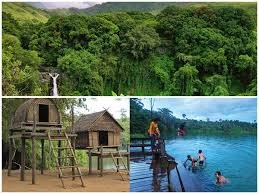

Trekking around Hanoi is the best way to discover Vietnam’s capital. What’s the best time to go trekking in Hanoi, Vietnam? Are there any treks near Hanoi? Just follow our complete guide about trekking in Hanoi with trips, advice, and reviews from our local hiking specialists.
May 28, 2025
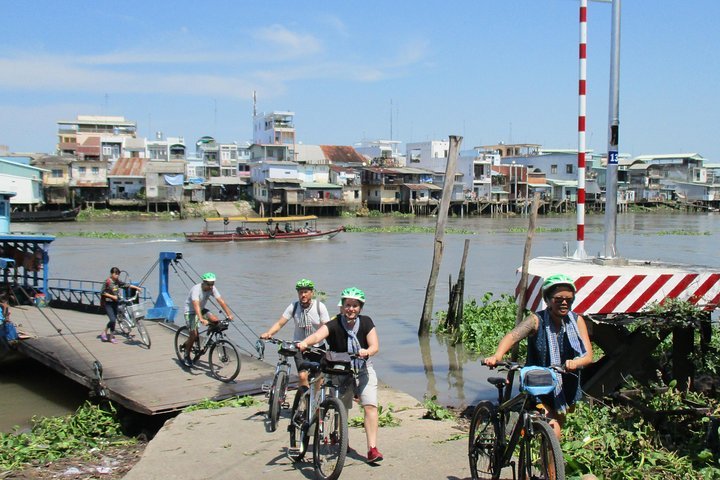
Mekong Delta Vietnam is one of Vietnam’s most popular destination for cyclists and fans of two wheels travel. The Mekong Delta region offers different cycling itineraries which can fit anyone’s needs.
May 28, 2025

Da Lat Cycling is our complete travel guide dedicated to all things Dalat bicycle travel: Da Lat bike rental, Da Lat bike tour, Da Lat rent bike, bicycle rental Da Lat, cycling in Da Lat, Da Lat mountain biking, Da Lat cycling.
May 28, 2025
.jpg)
Vietnam Central Highlands is an area of stunning natural beauty which extends from the Cat Tien National Park in the south as far as Quang Nam in the north. The region sees few foreign visitors, and many of them go to revisit old battlefields or see the indigenous tribes.
May 28, 2025

Nha Trang Cycling is our complete travel guide dedicated to all things Nha Trang bicycle travel – Nha Trang bicycle tour, cycling Nha Trang to Da Lat, countryside bike, mountain biking, bicycle rental, hire, route map.
May 28, 2025

Hoi An Cycling is our complete travel guide about Hoian bicycle travel – Hoi An cycle tours, cycling in and around Hoi An, countryside, ride Hoian to Hue, My Son, An Bang beach, Hoi An Vietnam bike, bicycle rental, route map.
May 28, 2025
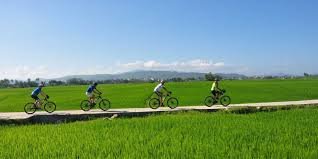
Want to cycle around Hue Vietnam? Need some advice to know where to go? What are the best bicycle routes in Hue? Looking for bike rentals in Hue? We have done the hard work for you. Keep reading to discover all about cycling in Thua Thien Hue Vietnam.
May 28, 2025
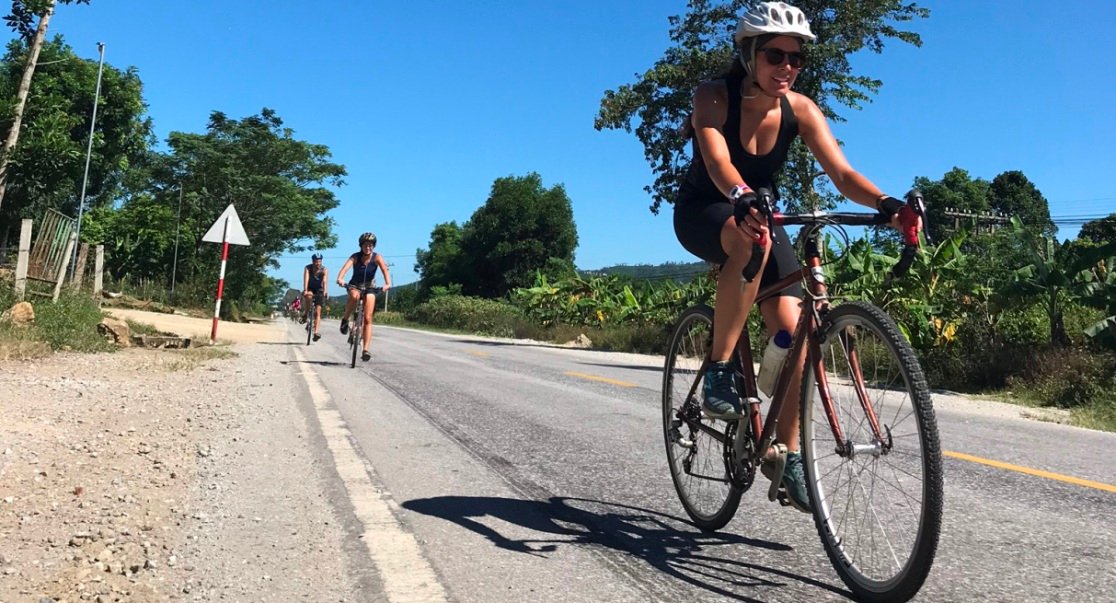
Cycling in central Vietnam offers a unique and exhilarating way to explore the stunning landscapes and cultural treasures of this beautiful region. From the bustling city of Da Nang to the peaceful countryside and charming villages, central Vietnam has something for every type of cyclist.
May 28, 2025

Cao Bang cycling is our complete travel guide dedicated to all things Cao Bang bicycle travel: Cycle Hanoi to Cao Bang, Cao Bang cycling tour, Sapa, Ha Giang to Cao Bang, mountain biking, bicycle hire, rent, rental, Cao Bang bicycle routes, Cao Bang Vietnam by bike…
May 28, 2025
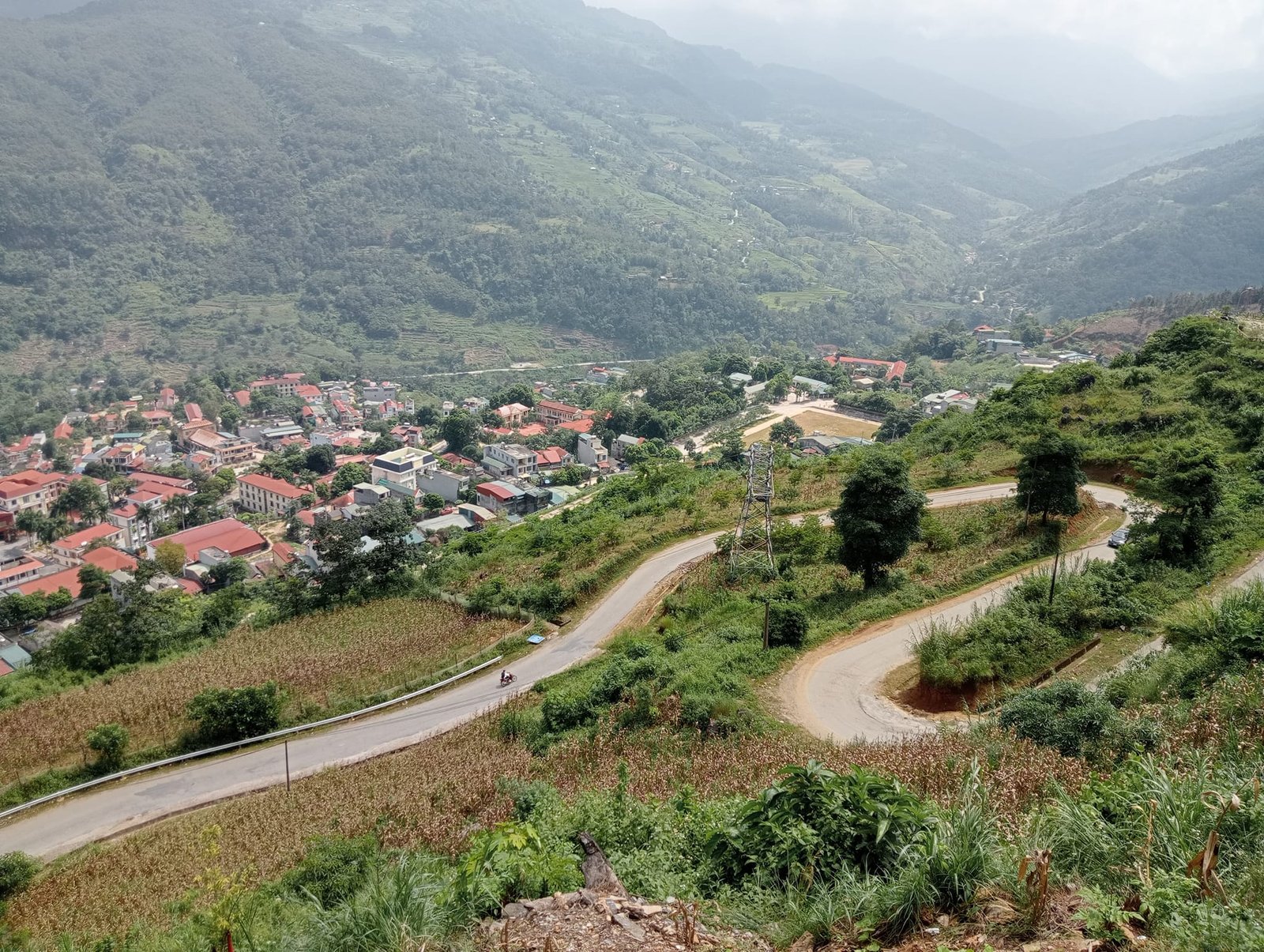
Ha Giang cycling is some of the most amazing experience in South East Asia. Every day offers a different terrain, gradient, vista and climate as you climb and descent the various altitudes of the Ha Giang Plateau.
May 28, 2025

Dien Bien cycling is our complete travel guide dedicated to all things Dien Bien bicycle travel: Cycle Hanoi to Dien Bien, Dien Bien cycling tour, Sapa to Dien Bien, mountain bike ride, bicycle hire, rent, rental, Dien Bien bike routes, Dien Bien Vietnam by bike…
May 28, 2025

Lai Chau cycling is our complete travel guide dedicated to all things Lai Chau bicycle travel: Hanoi to Lai Chau cycling, Lai Chau cycling tour, Sapa to Lai Chau, Dien Bien, mountain bike ride, bicycle hire, rent, rental, Lai Chau bike routes, Lai Chau Vietnam by bike…
May 28, 2025

Bac Ha cycling is our complete travel guide about cycling in Bac Ha Vietnam. If you search for biking around Bac Ha, cycle from Bac Ha to Lao Cai, Bac Ha bike ride, Bac Ha to Ha Giang bicycle tour, then you should keep reading. We brings on this page helpful information about Bac Ha mountain bike tour as well as related information you might need to plan your upcoming trip.
May 28, 2025
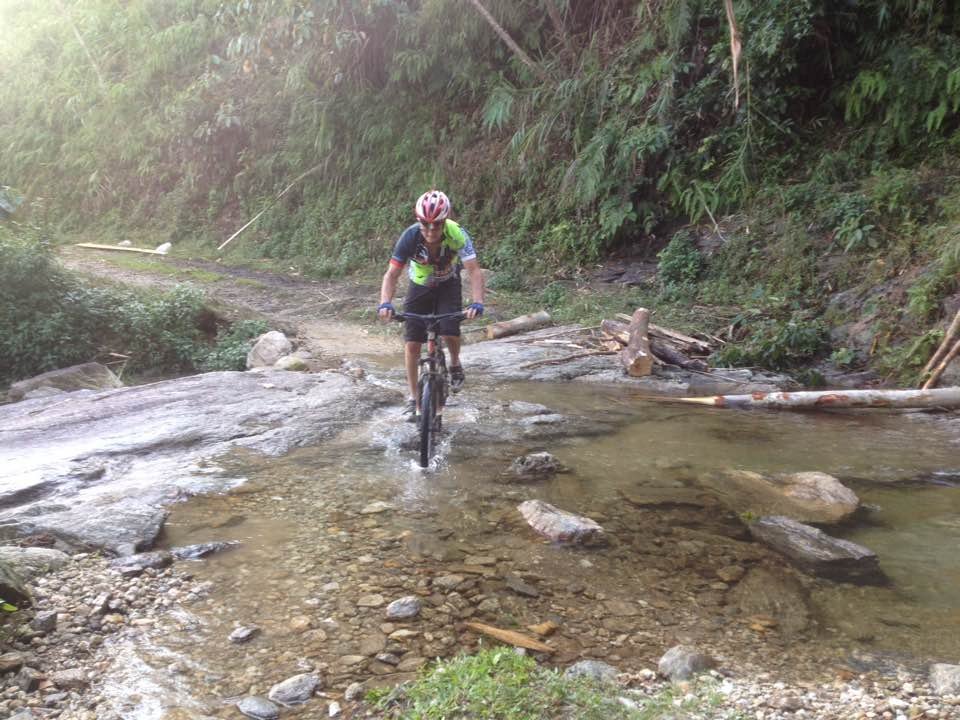
Sapa cycling is our complete Sapa travel guide dedicated to all things bicycle travel: Hanoi to Sapa cycling, Sapa cycling tour, mountain bike race, bicycle hire, rent, rental, Sapa bike routes, Sapa Vietnam by bike.
May 28, 2025

Cycling in northern Vietnam is a great way to explore the region’s stunning landscapes and rich culture. The north of Vietnam is known for its mountainous terrain, with rolling hills and rugged mountain ranges that offer plenty of challenging and scenic cycling routes.
May 28, 2025

E-bike tours in Vietnam offer an exciting and eco-friendly way to explore the country’s stunning landscapes, rich culture, and ancient history.
With the electric assistance, you can effortlessly ride through cities, rice paddies, and mountainous regions, taking in the breathtaking scenery along the way.
May 28, 2025
.jpg)
Cat Ba Island cycling is one of primary outdoor activities in Vietnam which offers the chance to explore the biggest island in Ha Long Bay – Cat Ba Island, its white sand beaches, fishermen villages, the Cat Ba national park, and the local community.
May 28, 2025

Ninh Binh cycling is our complete travel guide about cycling in Ninh Binh Vietnam. It is about practical information about cycling in Ninh Binh, bike tour, bicycle rental, bike hire, Ninh Binh cycle route, map…
May 28, 2025

Pu Luong cycling lets you discover the beautiful countryside of the northern Vietnam as well as experience rural village life from up close. Biking on the back roads, through countryside lanes, and past stunning rice terrace fields, narrow dirt tracks, hard-surface valleys and mountain passes while greeting local farmers as you pass by, all add to an immersive experience!
May 28, 2025

Mai Chau cycling lets you discover one of the most beautiful countryside village of Vietnam, as well as to experience the rich culture and tradition of the Thai ethnic group. Pedaling on the quiet back roads, through countryside lanes while greeting local farmers and school kids as you pass by, all add to an immersive experience!
May 28, 2025